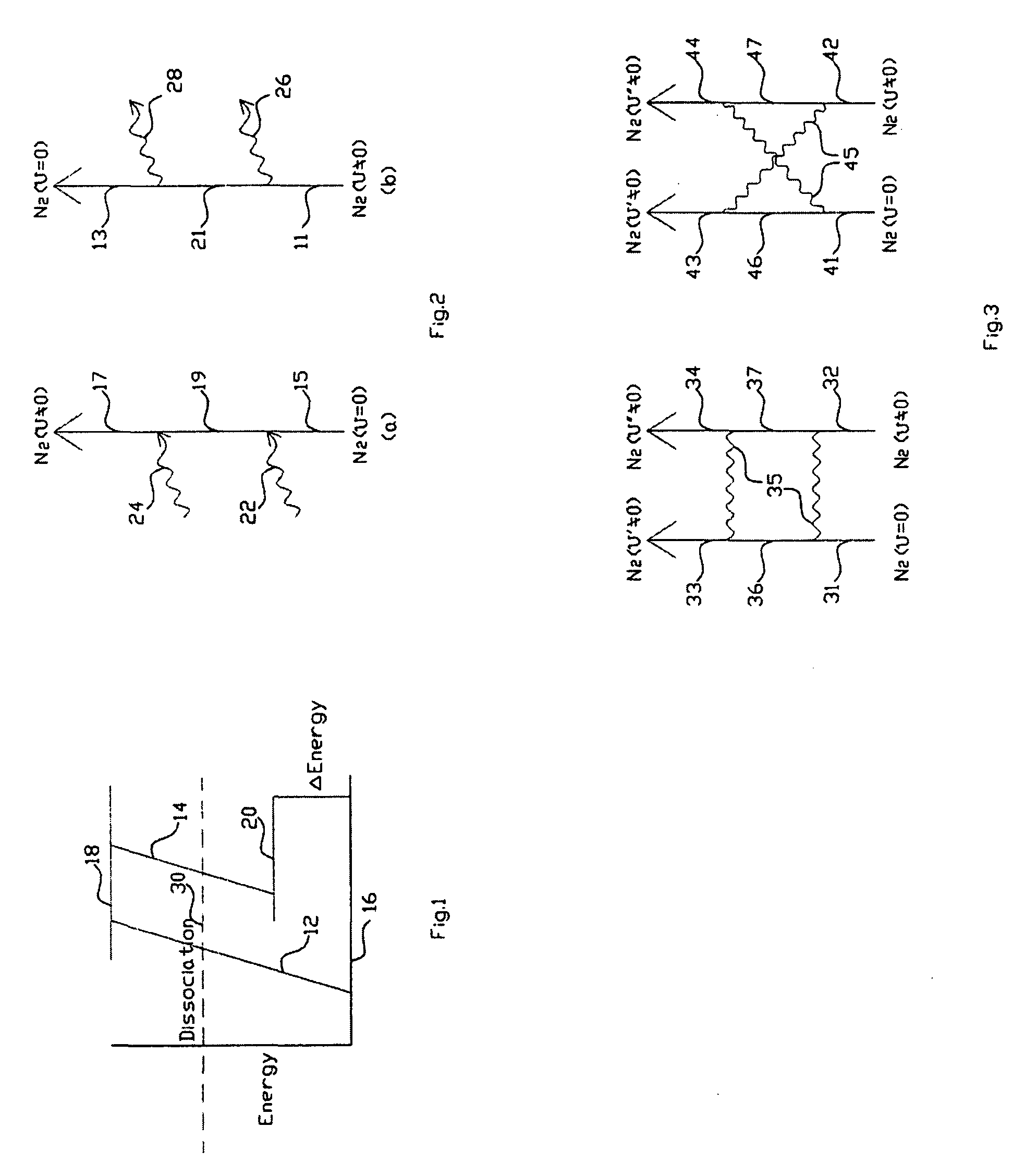Direct synthesis of hydrazine through nitrogen fixation by means of two-photon absorptions
a nitrogen fixation and nitrogen technology, applied in the field of two-photon absorption nitrogen fixation methods, can solve the problems of not achieving practical results, unable to achieve commercial exploitation, and the method failed to produce nsub>2/sub>h/sub>4 from its elements, etc., to achieve the effect of short radiative lifetime and greatly increased laser energy
- Summary
- Abstract
- Description
- Claims
- Application Information
AI Technical Summary
Benefits of technology
Problems solved by technology
Method used
Image
Examples
Embodiment Construction
[0039]The present invention contemplates a system of photoexcitation and chemical reaction in which an enhanced polyatomic molecule formation efficiency is achieved, that is, more molecules are formed with a minimum of energy input. In particular, photoexcitation occurs through absorption of two photons by an N2 molecule. Following this photoexcitation, polyatomic molecules are formed in accordance with the method of excited-state laser chemistry. The process thus described is illustrated in FIG. 1 showing first and second energy steps, 12 and 14, starting from a ground state, 16, and proceeding to an intermediate excited state, 18, and ultimately ending in a highly excited state, 20. The intermediate state, 18, belongs to the first excited electronic configuration. The transition through this state is nonresonant. Additionally it is desired and deemed preferable to also excite molecules from other low-lying energy states, such as the different rotational states with quantum number ...
PUM
| Property | Measurement | Unit |
|---|---|---|
| near infrared wavelengths | aaaaa | aaaaa |
| near infrared wavelengths | aaaaa | aaaaa |
| wavelength | aaaaa | aaaaa |
Abstract
Description
Claims
Application Information
 Login to View More
Login to View More - R&D
- Intellectual Property
- Life Sciences
- Materials
- Tech Scout
- Unparalleled Data Quality
- Higher Quality Content
- 60% Fewer Hallucinations
Browse by: Latest US Patents, China's latest patents, Technical Efficacy Thesaurus, Application Domain, Technology Topic, Popular Technical Reports.
© 2025 PatSnap. All rights reserved.Legal|Privacy policy|Modern Slavery Act Transparency Statement|Sitemap|About US| Contact US: help@patsnap.com



